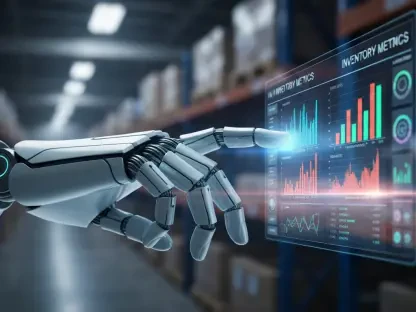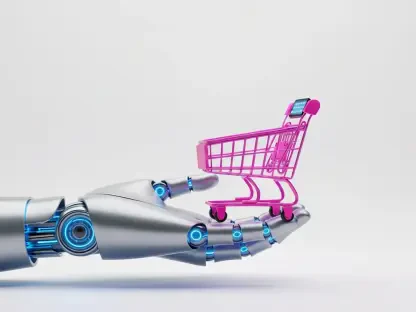I’m thrilled to sit down with Zainab Hussain, our esteemed retail expert and e-commerce strategist, who brings a wealth of experience in customer engagement and operations management. Today, we’re diving into the transformative world of local advertising with a focus on Locality’s newly launched Advanced Audience Engine. In this conversation, Zainab shares her insights on how this innovative tool is reshaping the industry by tackling persistent challenges, leveraging AI and automation, and delivering smarter, more effective campaigns for advertisers. We’ll explore the strategic importance of this engine, its unique features, and the real-world impact it promises for local media solutions.
How did you first come across the concept of Locality’s Advanced Audience Engine, and what stood out to you as a game-changer in local advertising?
I’ve been following trends in local advertising for years, and when I learned about Locality’s Advanced Audience Engine, I was immediately intrigued by its bold approach. What stood out to me was how it’s not just another tool but a complete strategic shift. It reimagines the foundation of local ads by integrating AI, automation, and deep historical data to create precision and performance at scale. For me, the promise of unifying disconnected workflows and delivering real-time insights was a game-changer, especially in an industry often bogged down by inefficiencies.
What do you think are the biggest hurdles in local advertising that this engine is designed to address?
Local advertising has long struggled with fragmented processes, where data and workflows are siloed, making it tough to execute cohesive campaigns. Vendor complexity adds another layer of frustration, driving up costs and slowing things down. Then there’s the lack of real-time audience insights, which leaves advertisers guessing rather than acting on solid information. The Advanced Audience Engine tackles these head-on by creating a single, streamlined environment that automates processes and provides actionable data, helping advertisers save time and money while improving results.
Can you dive deeper into how the engine simplifies disconnected workflows for advertisers?
Absolutely. One of the core issues in local advertising is that teams often work across multiple platforms or tools that don’t talk to each other. This creates delays and errors. The engine solves this by unifying everything into a single AI-powered system within Locality’s LocalX platform. It connects data sources, automates segmentation, and lets advertisers activate campaigns seamlessly. This means less manual effort and a smoother path from planning to execution, which is a huge relief for anyone managing local campaigns.
How does the integration of generative AI enhance the capabilities of this tool for advertisers?
Generative AI is a critical piece of the puzzle here. It powers predictive models that help with smarter planning and budget allocation. For instance, it can analyze past campaign data and current trends to suggest where to allocate spend for maximum impact. This isn’t just guesswork; it’s data-driven decision-making that evolves in real time. The result is campaigns that are not only more effective but also more efficient, as advertisers can pivot quickly based on AI insights without wasting resources.
What role does automation play in speeding up campaign execution with the Audience Engine?
Automation is the engine’s secret weapon for speed. Tasks like audience segmentation, data integration, and even some aspects of campaign activation that used to take hours or days are now handled almost instantly. This means advertisers can launch campaigns faster and respond to market changes on the fly. For example, if a local event suddenly shifts audience behavior, the system can adjust targeting in real time without needing a team to manually rework everything. It’s about keeping pace with today’s fast-moving digital landscape.
How does Locality’s historical local media intelligence contribute to the effectiveness of this engine?
Locality has a treasure trove of historical data on local media and viewership, and this engine puts it to work in a powerful way. By combining this data with advertisers’ first-party and third-party data, it creates a richer, more nuanced understanding of local audiences. Historical insights, like past campaign performance or seasonal trends in specific markets, help predict what will resonate now. This depth of intelligence allows for hyper-targeted campaigns that feel personal to local consumers, which is invaluable for engagement and ROI.
Can you explain the importance of vertical-specific segmentation in custom audience building?
Vertical-specific segmentation is all about tailoring audiences to the unique needs of different industries. A retail brand, for instance, might need to target based on shopping behaviors, while a healthcare provider focuses on demographics tied to specific services. The engine uses advertiser data alongside Locality’s insights to build these precise segments. This matters because generic targeting often misses the mark in local markets. When you can zero in on the right audience with the right message, your campaign’s effectiveness skyrockets.
What benefits do advertisers gain from the engine’s unified targeting, analytics, and attribution features?
Having unified targeting, analytics, and attribution in one place is a huge win. It means advertisers can set up their audience targets, track performance, and measure outcomes without jumping between tools. This streamlines the process and reduces errors. More importantly, it gives a clear picture of what’s working and why. For someone running a campaign, this transparency is key to understanding ROI and making informed adjustments, whether they’re targeting across linear TV or digital channels.
How does operating within the LocalX platform enhance the engine’s value for users?
The integration with the LocalX platform is a major advantage because it creates a cohesive, all-in-one environment. Advertisers don’t have to deal with multiple logins or disjointed systems—everything from planning to activation happens in one place. This simplicity lowers the learning curve and saves time. Plus, it supports campaigns across both linear and digital channels, ensuring consistency no matter where the audience is. It’s like having a command center for local advertising that’s intuitive and powerful.
What kind of impact do you anticipate the Advanced Audience Engine will have on advertisers’ results?
I expect the impact to be significant. Advertisers should see faster campaign launches thanks to automation, better targeting through AI-driven insights, and ultimately higher ROI from more precise, data-backed strategies. The ability to act on real-time data means campaigns can adapt quickly to what’s working, avoiding wasted spend. For local businesses especially, this could mean connecting with their communities in ways that feel authentic and drive real results, whether that’s foot traffic or online conversions.
What is your forecast for the future of AI-driven tools like the Advanced Audience Engine in local advertising?
I believe we’re just at the beginning of what AI-driven tools can do for local advertising. Over the next few years, I foresee these solutions becoming even more intuitive, with deeper personalization and predictive capabilities that anticipate consumer behavior before it even happens. The Advanced Audience Engine is setting a high bar by prioritizing transparency and performance, and I think it will push the industry toward more integrated, data-centric approaches. Local advertising will likely become less of a gamble and more of a science, with tools like this leading the charge.









